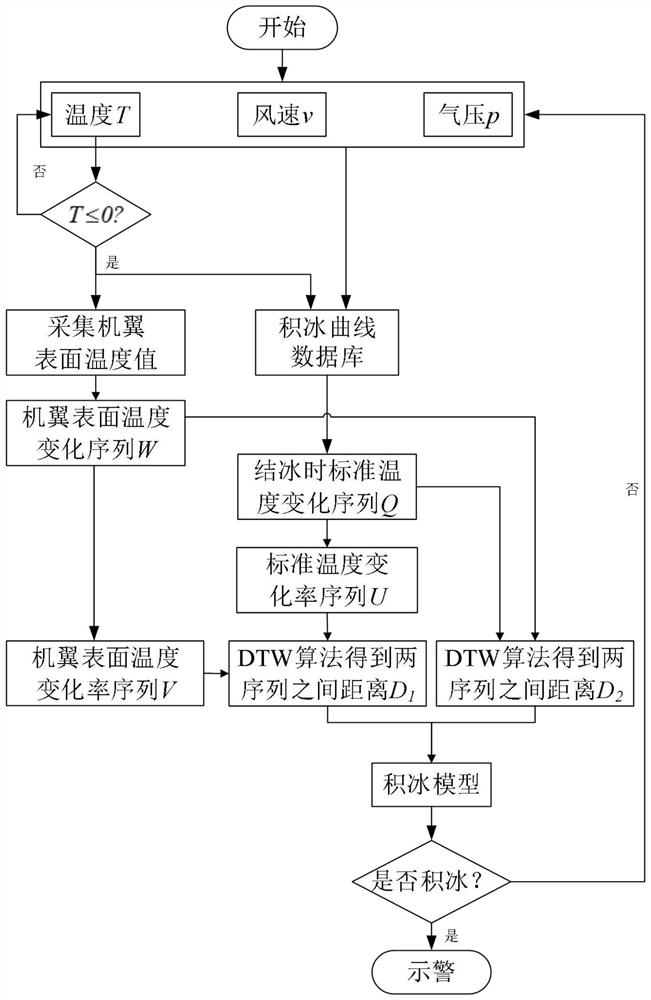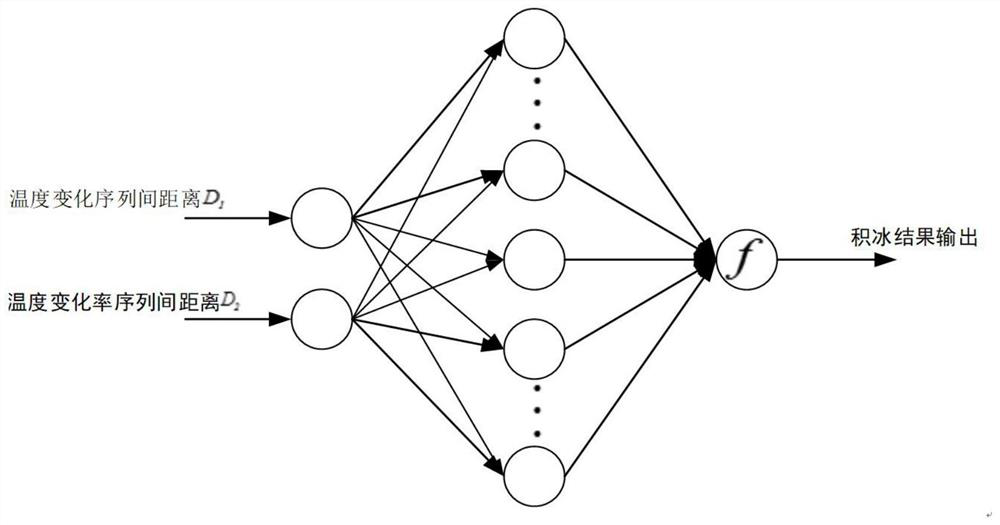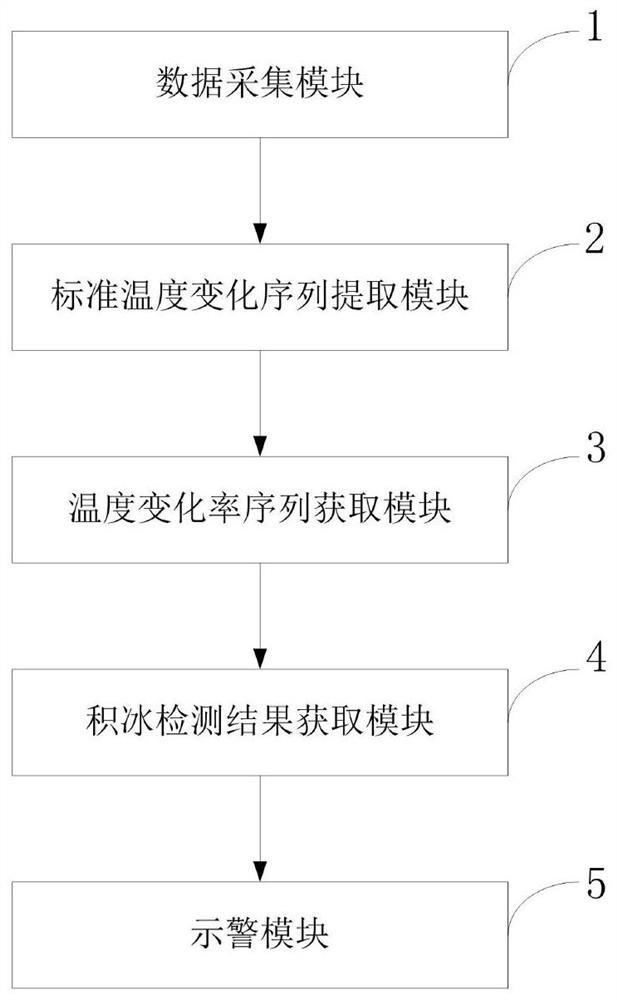Ice accumulation detection method and system based on temperature sequence similarity measurement, terminal and application
A technology of similarity measurement and temperature sequence, applied in neural learning methods, biological neural network models, design optimization/simulation, etc. Powerful, easy-to-implement effects
- Summary
- Abstract
- Description
- Claims
- Application Information
AI Technical Summary
Problems solved by technology
Method used
Image
Examples
Embodiment 1
[0062] Based on the icing detection method of temperature sequence similarity measurement, the standard temperature change sequence extraction module 2 is embedded with an icing curve sample library, and the sample library should be established before use. The specific method is:
[0063] The icing curve will be affected by meteorological conditions such as atmospheric temperature T, wind speed v, and air pressure p. The lower the atmospheric temperature, the faster the cooling of the aqueous solution; the greater the wind speed, the greater the heat transfer coefficient of the water surface; the lower the pressure, the more intense the molecular motion; these factors will lead to changes in the ice accretion curve. Through theoretical analysis, the interaction relationship among the parameters is determined, and then the ice accumulation curves under different conditions are obtained through numerical simulation to form the ice accumulation curve sample library.
[0064] Such...
Embodiment 2
[0074] Based on the icing detection method of temperature sequence similarity measurement, the icing detection result acquisition module 4 utilizes the icing model to output the final icing detection result; as figure 2 As shown, the icing model adopts a BP neural network model, wherein the model input layer has two neurons, that is, the distance D between the collected temperature change sequence and the standard temperature change sequence during icing 1 and the distance D between the temperature change rate series 2 , the number of neurons in the hidden layer is determined according to specific experiments. There is one neuron in the output layer. The threshold output function is used to set the similarity threshold. The output result is 0 or 1. If the output result is 1, it indicates that ice accumulation has occurred; output If it is 0, it means that there is no risk of icing at present.
[0075] When the network model is initialized, random numbers with small connectio...
Embodiment 3
[0077] The icing detection method based on the similarity measurement of temperature series; affected by various external factors, there is a certain difference in the temperature change amplitude of the wing surface, and the temperature change series and temperature change rate series will stretch or compress along the time axis, which is different from the The peaks of the standard temperature change or temperature change rate series curves do not correspond, making it impossible to use the traditional Euclidean distance to measure the similarity between two sequences. For this kind of distance measurement whose waveform is dynamic correspondence rather than one-to-one correspondence, better results can be achieved by using the DTW method. The icing detection result acquisition module 4 utilizes the dynamic time warping method (DTW) to calculate and collect the wing surface temperature change sequence W={w 1 ,w 2 ,...,w m} and the standard temperature change sequence Q={q ...
PUM
 Login to View More
Login to View More Abstract
Description
Claims
Application Information
 Login to View More
Login to View More - R&D
- Intellectual Property
- Life Sciences
- Materials
- Tech Scout
- Unparalleled Data Quality
- Higher Quality Content
- 60% Fewer Hallucinations
Browse by: Latest US Patents, China's latest patents, Technical Efficacy Thesaurus, Application Domain, Technology Topic, Popular Technical Reports.
© 2025 PatSnap. All rights reserved.Legal|Privacy policy|Modern Slavery Act Transparency Statement|Sitemap|About US| Contact US: help@patsnap.com



